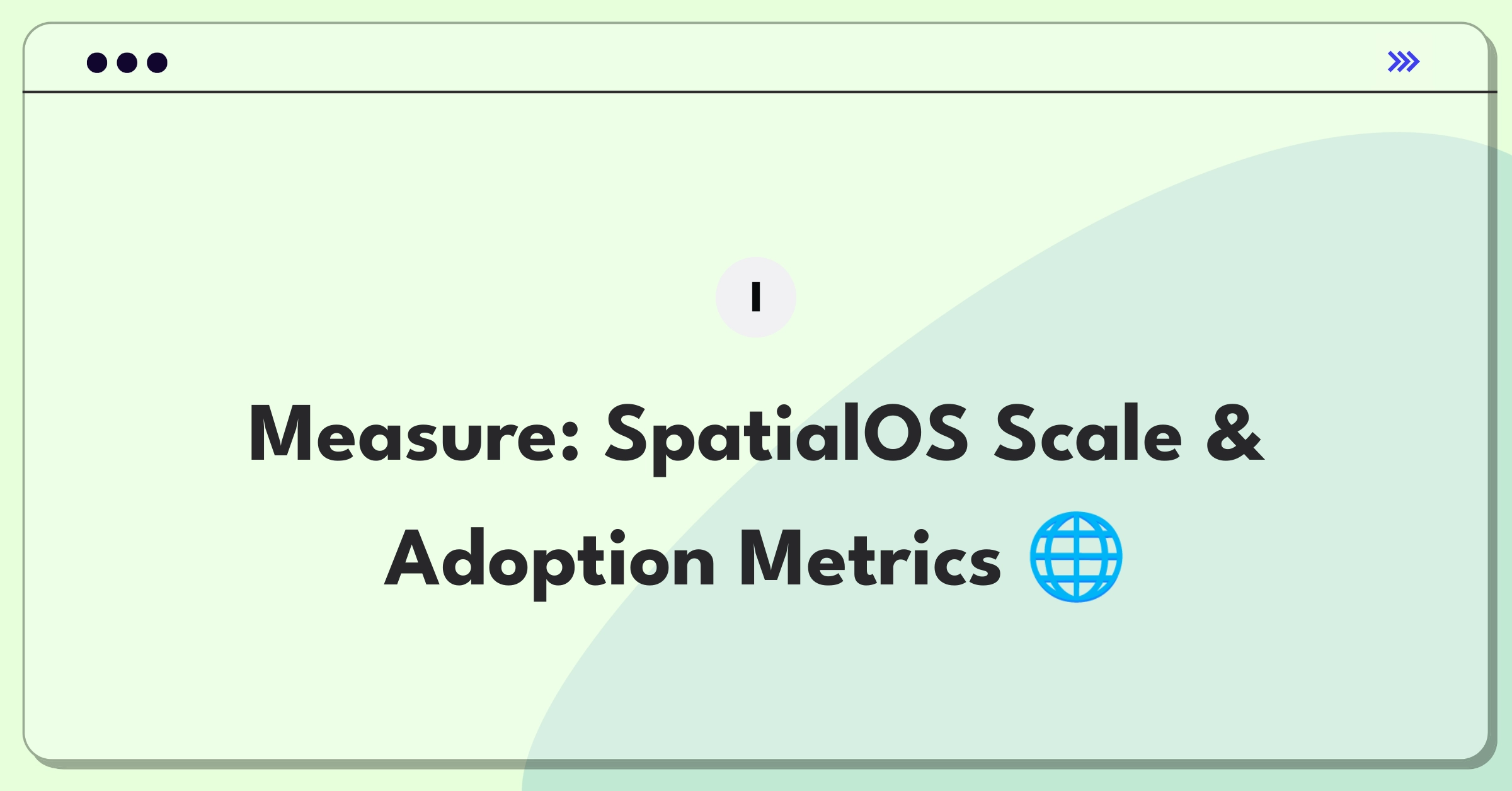Introduction
Evaluating the success of Improbable's SpatialOS platform requires a comprehensive approach to product metrics. This cloud-based platform for building large-scale simulations and virtual worlds presents unique challenges in measuring performance and impact. I'll follow a structured framework covering core metrics, supporting indicators, and risk factors while considering all key stakeholders.
Framework Overview
I'll follow a simple success metrics framework covering product context, success metrics hierarchy, and strategic initiatives.
Step 1
Product Context
SpatialOS is a cloud-based platform that enables developers to create and run massive, persistent online worlds and simulations. It's designed to overcome the limitations of traditional server architectures, allowing for more complex and dynamic virtual environments.
Key stakeholders include:
- Game developers and studios (primary users)
- Enterprise clients (for non-gaming simulations)
- End-users of the games/simulations
- Improbable's investors and leadership team
User flow:
- Developers integrate SpatialOS into their project
- They build and test their virtual world/simulation
- The project is deployed and scaled on SpatialOS infrastructure
- End-users interact with the resulting game or simulation
SpatialOS fits into Improbable's strategy of revolutionizing online experiences and simulations. It competes with traditional game engines and cloud services but offers unique capabilities for large-scale, persistent worlds.
Product Lifecycle Stage: Growth stage - SpatialOS has moved beyond initial launch and is now focusing on expanding its user base and use cases.
Software-specific context:
- Platform: Cloud-based, language-agnostic
- Integration points: Game engines (Unity, Unreal), custom engines
- Deployment model: Fully managed cloud service
Subscribe to access the full answer
Monthly Plan
The perfect plan for PMs who are in the final leg of their interview preparation
$99 /month
- Access to 8,000+ PM Questions
- 10 AI resume reviews credits
- Access to company guides
- Basic email support
- Access to community Q&A
Yearly Plan
The ultimate plan for aspiring PMs, SPMs and those preparing for big-tech
$99 $33 /month
- Everything in monthly plan
- Priority queue for AI resume review
- Monthly/Weekly newsletters
- Access to premium features
- Priority response to requested question


.png)